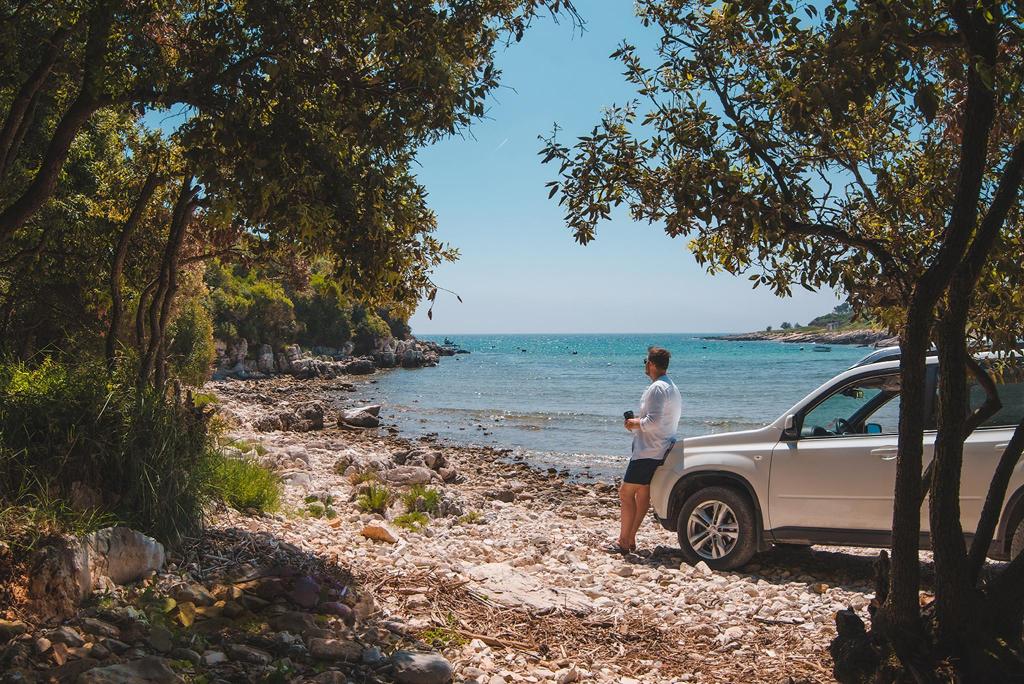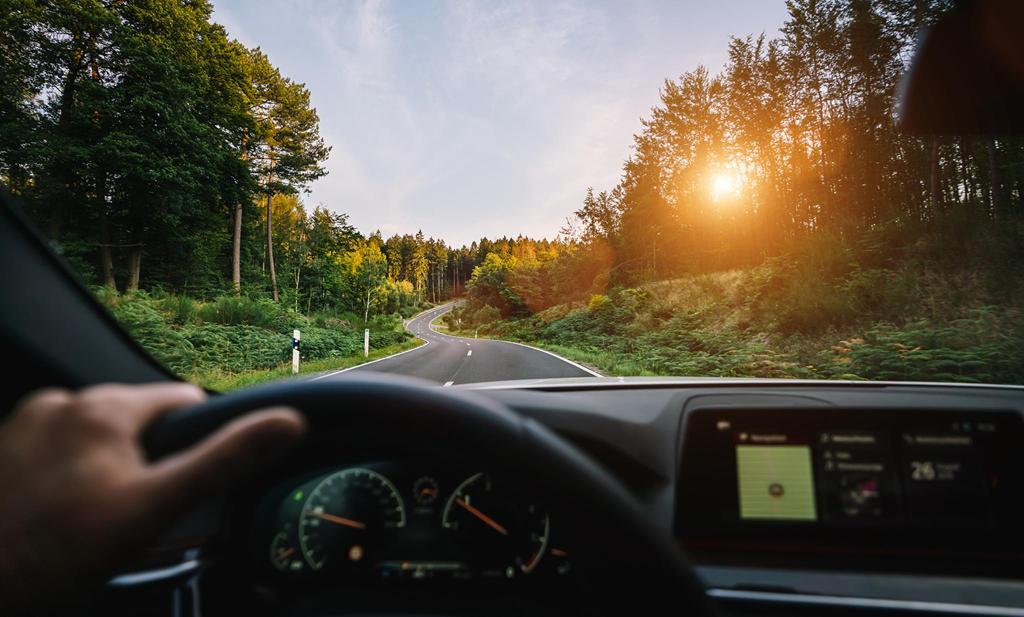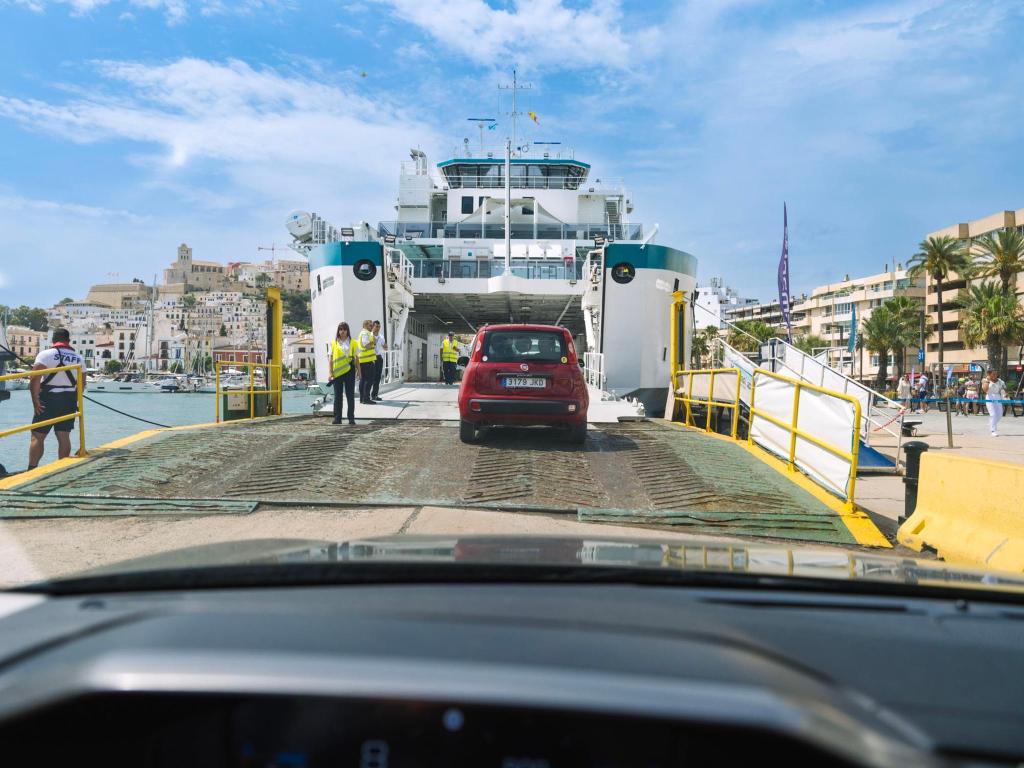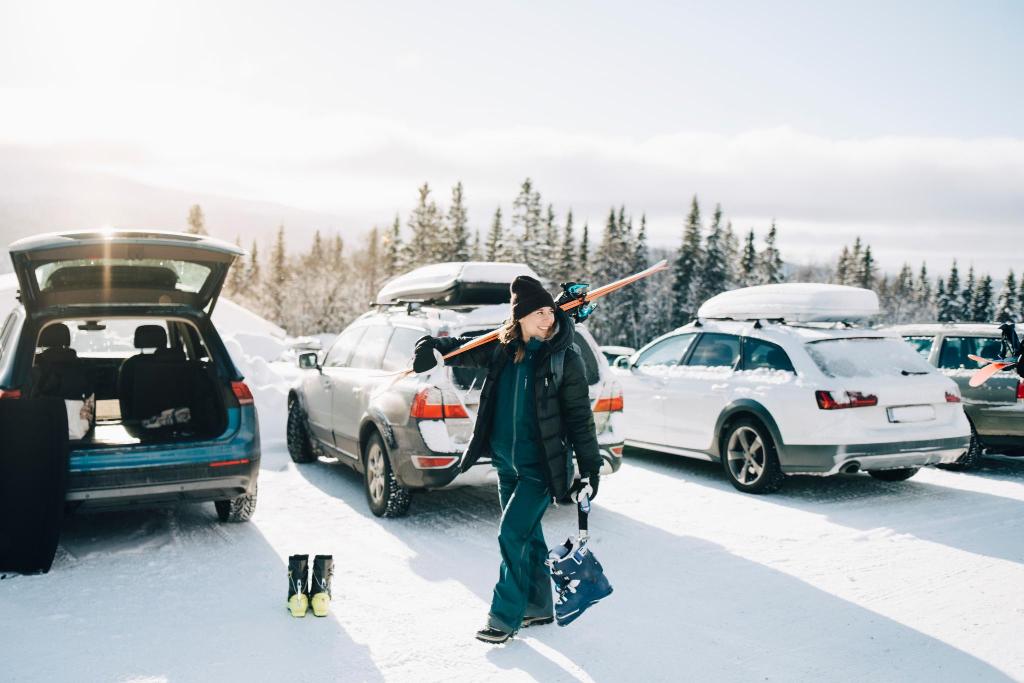
How to Rent a Car for Your Ski Trip
Your safety is paramount. If you're not comfortable with the vehicle's preparedness for winter conditions, don't hesitate to seek alternatives or adjust your travel plans.
Planning a ski trip can be exciting, but figuring out transportation can be tricky. Renting a car often makes sense, giving you the freedom to explore and easily transport your gear. But there are some important things to consider when renting a car for snowy conditions. Let's dive into everything you need to know to make your ski trip car rental a breeze.
What type of rental car works best for a ski trip?

When it comes to choosing a rental car for your ski adventure, bigger is often better. Here's what to look for:
- Four-wheel drive (4WD) or all-wheel drive (AWD): these vehicles provide better traction in snowy and icy conditions, making them safer and more reliable for winter driving.
- SUV or larger vehicle: more space means more comfort for you and your fellow travelers, plus room for bulky ski gear.
- High ground clearance: this feature helps navigate through deep snow and unplowed roads you might encounter at ski resorts.
- Winter tires: while not always standard, winter tires can significantly improve your vehicle's performance in cold, snowy conditions.
Remember, popular ski destinations often see high demand for these types of vehicles during peak season, so book early to secure your ideal car.
When's the cheapest time to book a rental car for a ski trip?
Timing can make a big difference in your rental car costs for a ski trip. Here are some tips:
- Book early: especially for peak ski season (typically December through February), booking at least a month in advance can save you money and ensure availability.
- Consider shoulder season: if your schedule is flexible, consider planning your trip for early or late in the ski season. You might find better deals on both car rentals and ski passes.
- Compare weekday vs. weekend rates vs. weekly rates: sometimes, starting your rental on a Thursday or Monday instead of Friday or Saturday can lead to lower rates. Renting for a full week can also mean a lower rate compared to the daily rate.
- Look for package deals: you may be able to get a discount when you bundle your car rental with flight or accommodation bookings.
- Check for discount codes: before finalizing your booking, search for promotional codes or discounts you might be eligible for through memberships or credit card perks.
What's the best way to insure a rental car for skiing?
Insurance is crucial when renting a car for a ski trip, given the potential hazards of winter driving. Here are your main options:
- Rental company insurance: this typically includes collision damage waiver (CDW) and liability protection. While convenient, it can be pricey.
- Personal auto insurance: your regular car insurance might extend to rental cars. Contact your insurance provider to confirm coverage.
- Credit card coverage: many credit cards offer rental car insurance if you use the card to pay for the rental. Check your card's terms, as some exclude certain vehicle types or don't cover winter sports equipment.
- Third-party insurance: companies like Allianz and Insuremyrentalcar.com offer standalone policies that can be more affordable than rental company insurance.
- Travel insurance: some comprehensive travel insurance policies include rental car coverage.
Whichever option you choose, make sure you're covered for winter driving conditions and any ski equipment you'll be transporting.
Will the car be ready for driving in ice and snow?

This is a crucial question to ask your rental company. Here's what to check:
- Winter tires: in some ski destinations, winter tires are legally required during certain months. Confirm if your rental will have them.
- Snow chains: some areas require vehicles to carry snow chains. Ask if these are provided or if you need to rent them separately.
- Ice scraper and snow brush: these essential tools should be included with your rental in snowy areas.
- Antifreeze windshield washer fluid: this helps prevent your windshield from freezing over.
- Emergency kit: ideally, the car should come equipped with a basic emergency kit including items like a flashlight, first-aid supplies, and a blanket.
If any of these items aren't standard, ask about adding them to your rental. It's better to be prepared than caught off guard in wintry conditions.
Can you carry skis and/or snowboards in a rental car?
Many rental cars can accommodate skis and snowboards, but it's important to plan ahead:
- Check the vehicle dimensions: make sure the car you're renting is large enough to fit your gear. SUVs and station wagons are typically good options.
- Use the backseat pass-through: many cars have a small door between the trunk and backseat, perfect for sliding in skis.
- Fold down seats: if your rental has fold-down rear seats, you can extend the trunk space for longer items.
- Consider a roof rack: for larger groups or more gear, a roof rack might be necessary.
- Protect the interior: bring a tarp or blanket to protect the car's interior from wet, dirty equipment.
Always inform the rental company that you'll be transporting ski equipment to ensure you get a suitable vehicle.
What if you need a ski rack?
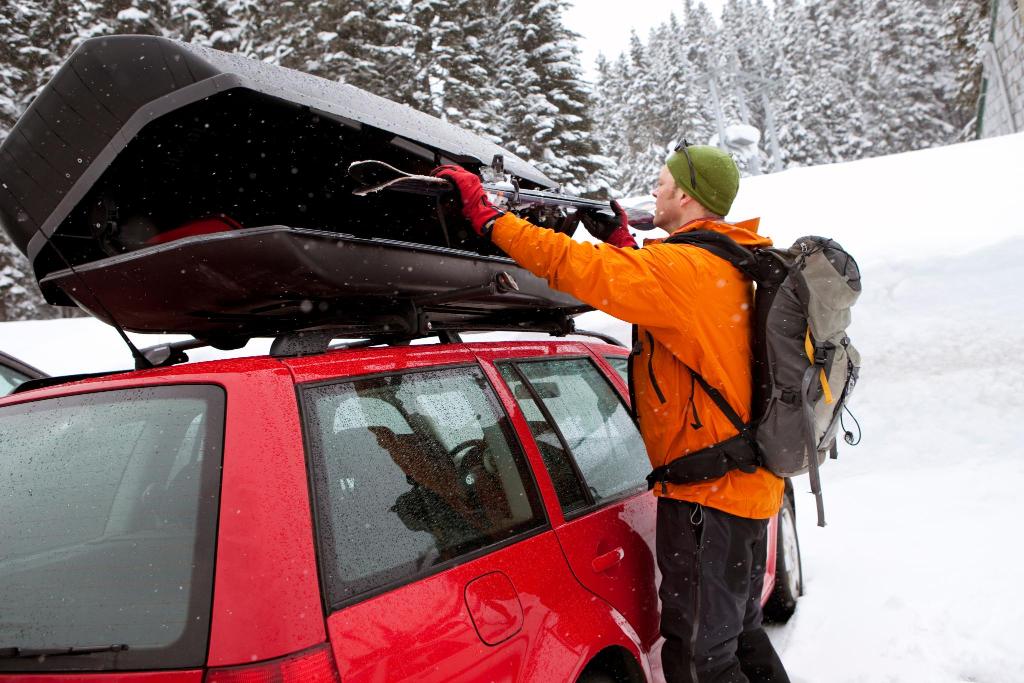
If your rental car doesn't have enough interior space for your gear, a ski rack can be a great solution:
- Request in advance: some rental companies offer ski racks as an add-on, but availability may be limited. Book early to secure one.
- Check compatibility: make sure the rack is compatible with your specific rental vehicle.
- Consider the cost: ski rack rentals usually come with an additional daily fee. Factor this into your budget.
- Learn how to use it: if you're not familiar with ski racks, ask the rental agent for a demonstration.
- Check your insurance: make sure your rental insurance covers any potential damage related to the ski rack.
Keep in mind that improperly secured equipment can be dangerous, so always double-check that everything is fastened correctly before hitting the road.
What is winterization?
Winterization is the process of getting a vehicle ready for safe operation in cold weather conditions. For rental cars, this usually includes:
- Installing winter tires or all-season tires with good tread depth.
- Checking and replacing antifreeze fluid.
- Using winter-grade oil that performs well in cold temperatures.
- Installing wiper blades designed for ice and snow.
- Checking the battery, as cold weather can affect battery performance.
- Making sure the heater and defroster are working properly.
Winterization helps ensure your rental car is ready to handle snowy and icy road conditions safely.
How will I know if I need winterization?
Whether you need a winterised rental car depends on several factors:
- Destination: if you're heading to a known ski resort or area with frequent snow and ice, winterization is likely necessary.
- Time of year: winter months (typically November through March in the Northern Hemisphere) often require winterized vehicles in colder regions.
- Local laws: some areas legally require winter tires or chains during certain months.
- Weather forecast: check the expected conditions for your trip dates.
- Rental company policies: some companies automatically winterize their fleet in certain locations during winter months.
When in doubt, it's always better to opt for a winterized vehicle for your ski trip to ensure safety and peace of mind.
I'm hiring a car where wintry weather is the norm: compulsory winterization
In locations where winter weather is common, many rental companies winterize their fleet:
- Automatic inclusion: winterization is often automatically included in your rental package.
- No additional cost: in these areas, winterization is typically provided at no extra charge.
- Standard equipment: expect winter tires to be standard.
- Local compliance: this ensures the vehicle meets local legal requirements for winter driving.
- Peace of mind: you can feel confident that your rental car is prepared for local weather conditions.
Always double-check with your rental company to confirm what's included in their winterisation process.
I'm hiring a car where wintry weather is forecast: compulsory winterization
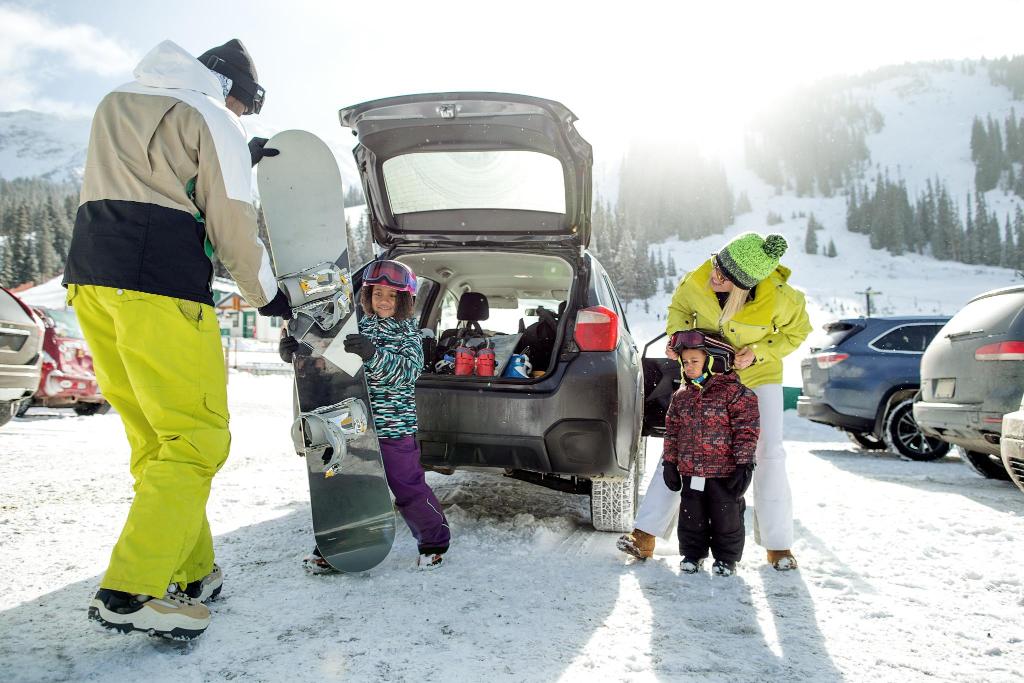
If you're renting in an area where winter weather isn't constant but is forecast for your trip:
- Weather-dependent policy: some companies winterize their fleets based on weather forecasts.
- Possible additional cost: unlike areas where it's always included, there might be a fee for this service if you’re renting a car that isn’t already winterized.
- Limited availability: winterized vehicles might be in high demand, so book early.
- Automatic upgrade: you might be automatically upgraded to a winterized vehicle if available.
- Cancellation options: check if you have the option to cancel without fees if you're not comfortable driving in forecasted conditions.
Always communicate with your rental company about expected weather conditions and their winterization policies.
I'm driving to somewhere with wintry weather: requesting winterization
If you're picking up a car in a mild climate but driving to a ski destination:
- Request in advance: contact the rental company ahead of time to request winterization.
- Additional cost: be prepared to pay extra for this service.
- Availability may vary: not all locations will offer winterization, especially in typically warm areas.
- Consider alternatives: if winterization isn't available, consider renting snow chains or switching to a rental from a location closer to your ski destination.
- Check your route: research the roads you'll be traveling on and their winter weather policies.
Remember, your safety comes first. If you're not comfortable with the vehicle's preparedness for winter conditions, don't hesitate to seek alternatives or adjust your travel plans. By keeping these factors in mind and planning ahead, you can make sure you have a safe and enjoyable ski trip with a well-prepared rental car.

- Premi delle compagnie aeree
- Dritte sui voli
- Viaggi avventura
- Viaggi di lusso
- Viaggiare a tempo pieno
 Essential Tips for Smart Car Rental Decisions2 aprile 2025
Essential Tips for Smart Car Rental Decisions2 aprile 2025 What Is an ‘SUV’ in Car Rental?2 aprile 2025
What Is an ‘SUV’ in Car Rental?2 aprile 2025 7 Airline Business Classes Compared31 marzo 2025
7 Airline Business Classes Compared31 marzo 2025 Can I Take My Hire Car on a Ferry?28 marzo 2025
Can I Take My Hire Car on a Ferry?28 marzo 2025 Got an Unexpected Charge From Your Car Rental?28 marzo 2025
Got an Unexpected Charge From Your Car Rental?28 marzo 2025 How Can I Get the Exact Hire Car That I Want?28 marzo 2025
How Can I Get the Exact Hire Car That I Want?28 marzo 2025 What Is a Fuel Policy?28 marzo 2025
What Is a Fuel Policy?28 marzo 2025 What To Do if You’re on a Diverted Flight?28 marzo 2025
What To Do if You’re on a Diverted Flight?28 marzo 2025 Understanding Rental Car Fees and Charges25 febbraio 2025
Understanding Rental Car Fees and Charges25 febbraio 2025 How To Avoid Losing Your Rental Car Deposit18 febbraio 2025
How To Avoid Losing Your Rental Car Deposit18 febbraio 2025 Car Rental Reviews: How Reviews Help You14 febbraio 2025
Car Rental Reviews: How Reviews Help You14 febbraio 2025 Tips for Returning Your Rental Car if the Counter is Closed30 dicembre 2024
Tips for Returning Your Rental Car if the Counter is Closed30 dicembre 2024 How to Travel with Bikes in a Rental Car: FAQs29 dicembre 2024
How to Travel with Bikes in a Rental Car: FAQs29 dicembre 2024 5-Minute Guide: Driving in the US28 dicembre 2024
5-Minute Guide: Driving in the US28 dicembre 2024 7 Easy Ways to Save Money on Car Rental27 dicembre 2024
7 Easy Ways to Save Money on Car Rental27 dicembre 2024 The Complete Guide To Airline Food27 dicembre 2024
The Complete Guide To Airline Food27 dicembre 2024 How Old Do You Have to Be to Rent a Car?26 dicembre 2024
How Old Do You Have to Be to Rent a Car?26 dicembre 2024 What is a Layover? A Complete Guide: Here’s What to Expect24 novembre 2024
What is a Layover? A Complete Guide: Here’s What to Expect24 novembre 2024 Standby Flights: What are They, and How do They Work?24 luglio 2024
Standby Flights: What are They, and How do They Work?24 luglio 2024
Potrebbero piacerti anche...
Learn more about the types of rental cars available when planning a vacation.
Your complete guide to understanding car rental fees, policies and optional add-ons to help you make informed choices.
Avoid common car rental pitfalls with our guide to the top 10 rental fails. Learn why people don't get their hire cars and how to ensure a smooth pickup.
Planning to choose an 'SUV' for your next rental? Get a clearer view of what an 'SUV' is with our handy guide.
How to avoid additional GPS/Sat Nav costs by using offline maps during your rental period.
Can I take my hire car on a ferry? Find out how to travel on a ferry with rental cars, the costs and ferry regulations for rental cars.










